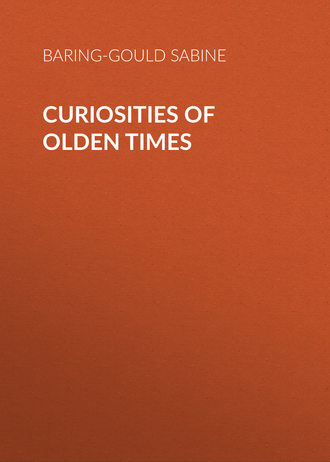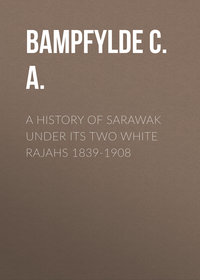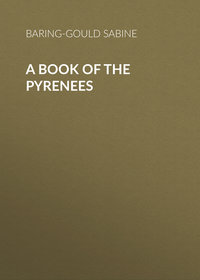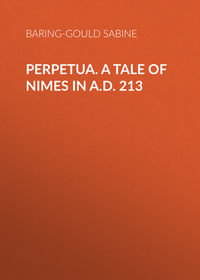 полная версия
полная версияCuriosities of Olden Times
We can understand that at a time when hysterical disorders were completely misunderstood, such marvellous contortions and tricks were reputed to be due to spiritual agency, either divine or diabolic. Towards the close of her days she spent most of her time in the Convent of St. Catherine, and she was there when attacked by her mortal sickness.
When she was apparently insensible the Superior, Sister Beatrice, said to her, “Christina! you have always been obedient to me; return now to life, I have something I desire to ask of you.”
Then Christina opened her eyes and said, “Why have you disturbed me? Be quick, I cannot tarry; tell me what you want, that I may be gone.”
Then the Superior put the question, received her reply, and the next moment the poor clouded spirit fled. She died on 24th July 1224, at the age of eighty-four.
Twenty-five years after her death an old woman told the Superior, “I have come to you with a divine revelation, to say that the body of that most holy woman, Christina, is not receiving proper respect from you. If you neglect to give it sufficient honour it will fare ill with you.”
On the strength of this vague message the body of the poor old creature was dug up, and enshrined. Miracles attended the elevation of the bones, and thenceforth St. Christina the Wonderful came to be regarded as a saint in the Low Countries. Her body is still preserved as that of one of the elect of God in the Church of St. Catherine at Milin, near St. Trond; and her name has been inserted in a good number of martyrologies – amongst others, that of France. It is not in the Roman Martyrology, where, however, she has a better right to figure than have St. Symeon Salos and St. Nicolas of Trani, who were loose fishes as well as fools.
THE JACKASS OF VANVRES
A CAUSE CÉLÈBREOn the 1st July 1750 Madame Ferron, washerwoman of Vanvres, entered Paris riding on a jackass in the flower of its age. The good lady had come a-marketing; and on reaching the house of M. Nepveux, grocer, near the Porte S. Jacques, she descended from Neddy’s back, and entered the shop, leaving the animal attached to the railings by his halter. After having made some purchases of soap and potash she asked the shopman to keep his eye on her ass whilst she went a few doors off to purchase some salt. This he neglected to do —Hinc illæ lacrymæ. A few moments after Madame Ferron had disappeared there passed Madame Leclerc, wife of a florist in Paris, mounted on a she-ass of graceful proportions and engaging appearance.
It has been questioned by some whether love at first sight is not altogether a fiction of poets and romancers. We are happy to be able to record an instance of this on unimpeachable historical evidence. A mutual passion kindled in the veins of these two asses simultaneously, during the brief space of time occupied by Madame Leclerc in passing before the grocer’s shop. Their eyes met.
The she-ass, unable to express the ardour of her affection by any other means, brayed thrice in the most tender and impassioned manner. The jackass replied with corresponding sentiment. He panted to approach her, but was restrained by his halter. To love, however, nothing is impossible; or, as the Latin syntax has it, “Amor omnia vincit.” He tossed his head, broke the cord, and trotted after the mistress of his affections.
Madame Leclerc adjured Neddy. Ladies do not like their servants to encourage followers. She shook her head at the lover and bade him return. But passion sometimes renders its victims insensible to the dictates of duty; Neddy still pursued.
On arriving at her door, near the Porte du Demandeur, the florist’s wife caught up a stick, and charged from her doorstep upon the young and ardent lover. The lady was exasperated at the silent contempt he had exhibited for her entreaties and objurgations. She hit him on the nose, she whacked his ribs, she beat his back, and the poor ass brayed with pain and rising indignation. The she-ass brayed sympathetically.
Madame Leclerc’s blows fell faster and more furiously, and then the lion under the ass’s skin became apparent. Neddy reared, and falling on the old lady, bit her in the arm.
The brayings of the animals and the cries of the lady attracted a crowd, and the combatants were parted. The washerwoman’s ass was consigned, with back-turned ears and palpitating sides, to confinement in a stable. Madame Leclerc retired to her apartment exhausted from her battle, and fainted, with feminine dexterity, into the extended arms of monsieur the florist, her husband, and monsieur the deputy florist, his assistant. By slow degrees the lady was brought round, by means of feathers burned under her nose, and a drop of cordial distilled down her throat. And where was the she-ass, the cause of all this mischief? She had been turned out into a clover-field. Such is the way of the world.
Next day the gardener’s wife sent notice to the shop of M. Nepveux that “If any one had lost an ass he would find it at the house of a floral gardener, Faubourg S. Marceau, near the Gobelins.”
Jacques Ferron, husband of the lady who had gone a-marketing on Neddy, had spent the night, as we learn from his express declaration in Court, on the borders of insanity. Not a wink of sleep visited his eyes during the hours of darkness, and the dawn broke upon him tossing feverishly on his pillow, with all the bedclothes in a heap upon the floor.
The news of his Neddy’s whereabouts being discovered, restored his spirits to equanimity. He wept for joy, and despatched his wife to claim the truant, whilst he himself remained in his doorway, with palpitating bosom and extended arms, ready to embrace the returning prodigal.
But, alas! Madame Ferron, on reaching the gardener’s house, learned to her dismay that she was involved in further misfortune. Madame Leclerc demanded damages for the bite she had received, to the amount of 1500 livres, and the ass would not be given up till the sum demanded was paid. Tears and entreaties were in vain; and the washerwoman returned to her husband with drooping head and a soul ravaged by despair.
On the following day, 4th July, a claim against Jacques Ferron for the sum of 1500 livres damages, and 20 sous a day for the keep of the ass, was lodged with the Commissaire Laumonier.
On the 21st August the Court ordered Leclerc to bring forward evidence to establish his claim, and the defendant was bidden challenge it. The case was heard on the 29th of the same month.
The plaintiff urged that his wife had been brutally assaulted by an enraged jackass belonging to the defendant, had been seriously alarmed by its ferocity, and had been severely bitten in the arm.
The damages claimed were reduced to 1200 livres, and payment was demanded, as before, for the keep of the delinquent.
The defence of Ferron was to this effect: —
“The ass of the washerwoman was tied to a railing. It was not likely to break away unless induced to do so by some one else. The she-ass of the plaintiff was the cause of the jackass breaking its halter and pursuing Madame Leclerc. Consequently the defendant was not responsible for what ensued.
“The distance between the Porte S. Jacques and the Gobelins is considerable, and the streets full of traffic. Had the florist’s wife wished to get rid of the jackass, there were numerous persons present who would have assisted her; but from her not asking assistance, it was rendered highly probable that she had deliberately formed the design of profiting by the circumstance, and of appropriating to herself the pursuing ass.
“The plaintiff pretends that 1200 livres are due to her because she was bitten by the ass of the defendant. No medical certificate of the date is produced, but only one a month after the transaction. No evidence is offered that this bite was given by Ferron’s ass, and the wound attested by the medical certificate may have been given by the ass of the plaintiff. But supposing the bite were that of Ferron’s ass, was not the poor beast driven to defend itself from the blows of the defendant? Is an ass bound to suffer itself to be maltreated with impunity?
“Asses are by nature gentle and pacific animals, and are not included amongst the carnivorous and dangerous beasts. Yet the sense of self-preservation is one of the rudimentary laws of nature, and the most gentle and docile brutes will defend themselves when attacked. Is it to be wondered at that the tender-spirited and love-lorn Neddy, when fallen upon by a ferocious woman armed with a thick club, her eyes scintillating with passion, her face flaming, her teeth gnashing, and foam issuing from her purple lips, whilst from her labouring bosom escape oaths and curses, at once profane and insensate – such as sacré bleu, and ventre gris, suggesting the probability that the utterer of the said expressions was a raving maniac; is it to be wondered at that Neddy when thus assaulted, and by such a person, should fall back on the first law of nature and defend himself?
“The opinion of Donat. (Loix Civiles, tom. i. lib. 2, tit. 8) is conclusive, for it enunciates the law (xi. tit. 2, lib. 9) Si quadrupes paup. fec., ff.
“‘If a dog or any other animal bites, or does any other injury because it has been struck or wilfully exasperated, he who gave occasion to the injury shall be held responsible for it, and if he be the individual who has suffered he must impute it to himself.’
“Now the woman Leclerc was not content with merely exasperating the jackass of Ferron, she almost stunned it with blows. She has therefore little reason for bringing so unfounded a claim for damages before the Court. Si instigatu alterius fera damnum dederit, cessabit hæc actio (Liv. i. § 6, lib. I).
“The more one reflects,” continued the counsel for the defendant, “upon the conduct of Madame Leclerc on this occasion, the less blameless appear her motives. If, as seems probable, she designed to gain possession of the donkey, she richly deserved the bite which she complains of having received. Pierre Leclerc cannot plead that his wife did not irritate the ass, for this is proved by the very witnesses whom he summoned to sustain his case. They stated in precise terms that ‘they saw Madame Leclerc pass, mounted on a she-ass, followed by a jackass, to which the said woman Leclerc dealt sundry blows, with the intention of driving it off; that, on reaching her door, and the animal approaching nearer, she beat him violently, and that then the said jackass bit her in the arm.’
“But further, who induced the ass to break his halter and follow the woman Leclerc as far as the Gobelins? Madame Leclerc’s ass, and none other but she. Having thus drawn another person’s animal away from its owner, and having placed it in her own stable, she claims 20 sous a day for the keep of an ass which Pierre Leclerc has retained on his own authority, against the will of the legitimate owner, from 1st July to 1st September, using it daily for going to market; thus, in all, he demands 60 livres for the keep of the beast. Although the price is twice the value of the ass itself, Ferron does not dispute the amount; he contents himself with observing that the woman Leclerc having brought upon herself the wound from the bite of the ass, which is the subject of litigation, she was not thereby morally or legally justified in detaining the animal that bit her till her demand for compensation was satisfied. If she fed and tended it, she was amply repaid by the use she and her husband made of it for carrying heavy burdens daily to market.
“On the other hand, Ferron has suffered from the loss of his ass, through its unjustifiable detention. He has been compelled to hire a horse during two months to carry on his business, and this has involved him in expenses beyond his means. For this loss Ferron will claim indemnification at the hands of Leclerc.”
Such was the case of the defendant. Along with it were handed in the two following certificates, the latter of which, as giving a character for morality and respectability to a donkey, is certainly a curiosity.
Certificate of the Sieur Nepveux, grocer, at whose shop-door the ass was tiedI, the undersigned, certify that on the 2nd July 1750 the day after the ass of the defendant Jacques Ferron, which had been attached to my door, had followed the female ass of the person Leclerc, there came, at seven o’clock in the morning, a woman to ask whether an ass had not been lost here; whereupon I replied in the affirmative. She told me that the individual who had lost it might come and fetch it, and that it would be returned to her; and that it was at a floral gardener’s in the Faubourg St. Marcel, near the Gobelins: in testimony to the truth of which I set-to my hand.
(Signed) Nepveux, grocer.
Porte Saint Jacques, Paris,
20th August 1720.
Certificate of the Curé, and the principal inhabitants of the parish of Vanvres to the moral character of the Jackass of Jacques Ferron.
We, the undersigned, the Prieur-Curé, and the inhabitants of the parish of Vanvres, having knowledge that Marie Françoise Sommier, wife of Jacques Ferron, has possessed a jackass during the space of four years for the carrying on of their trade, do testify, that during all the while that they have been acquainted with the said ass, no one has seen any evil in him, and he has never injured any one; also, that during the six years that it belonged to another inhabitant, no complaints were ever made touching the said ass, nor was there a breath of a report of the said ass having ever done any wrong in the neighbourhood; in token whereof, we, the undersigned, have given him the present character.

The case was dismissed by the Commissaire. Leclerc had to surrender the ass, and to rest content with the use that had been made of it as payment for its keep, whilst the claim for damages on account of the bite fell to the ground.
But if dismissed by the Commissaire, it was only that it might be taken up by the wits of the day and made the subject of satire and epigram. Some of the pieces in verse originated by this singular action are republished in the series Variétés Historiques et Literaires; allusions to it are not infrequent in the writers of the day.
About the same time an action was brought by a magistrate of position and fortune against the curé of St. Etienne-du-Mont, a M. Coffin, for refusing him the sacrament on account of a gross scandal he had caused. A wag contrasted the conduct of the two priests in the following lines: —
De deux curés portant blanches soutanes,Le procédé ne se ressemble en rien;L’un met du nombre des profanesLe magistrat le plus homme de bien;L’autre, dans son hameau, trouve jusqu’aux ânesTous ses paroissiens gens de bien.A MYSTERIOUS VALE
In the Gretla, an Icelandic Saga of the thirteenth century, is an account of the discovery of a remarkable valley buried among glacier-laden mountains, by the hero, a certain Grettir, son of Asmund, who lived in the beginning of the eleventh century. Grettir was outlawed for having set fire, accidentally, to a house in Norway, in which were at the time the sons of an Icelandic chief, too drunk to escape from the flames. He spent nineteen years in outlawry, hunted from place to place, with a price on his head. The Saga relating his life is one of the most interesting and touching of all the ancient Icelandic histories.
In the year 1025 Grettir was in such danger that he was obliged to seek out some unknown place in which to hide. In the words of the Saga: – About autumn Grettir went up into Geitland, and waited there till the weather was clear; then he ascended the Geitland glacier and struck south-east over the ice, carrying with him a kettle and some firewood. It is supposed that Hallmund (another outlaw) had given him directions, for Hallmund knew much about this part of the country. Grettir walked on till he found a dale lying among the snow-ranges, very long, and rather narrow, and shut in by glacier mountains on all sides, so that they towered over the dale.
He descended at a place where there were pleasant grassy slopes and shrubs. There were warm springs there, and he supposed that the volcanic heat prevented the valley from being closed in with glaciers.
A little river flowed through the dale, and on both banks there was smooth grassy meadow-land. The sunshine did not last long in the valley. It was full of sheep without number, and they looked in better condition and fatter than any he had seen before. Grettir now set to work, and built himself a hut with such wood as he could procure. He ate of the sheep, and found that one of these was better than two of such as were to be found elsewhere.
An ewe of mottled fleece was there with her lamb, the size of which surprised him. He fattened the lamb and slaughtered it, and it yielded forty pounds of meat, the best he had tasted. And when the ewe missed her lamb, she went up every night to Grettir’s hut and bleated, so that he could get no sleep. And it distressed Grettir that he had killed her lamb, because she troubled him so much. Every evening, towards dusk, he heard a lure up in the dale, and at the sound all the sheep hurried away towards the same spot. Grettir used to declare that a Blending,19 a Thurse named Thorir, possessed the dale, and that it was with his consent that Grettir lived there. Grettir called the dale after him, Thorir’s dale. Thorir had two daughters, according to his report, and Grettir entertained himself with their society: they were all glad of his company, as visitors were scarce there. When Lent came on, Grettir determined to eat mutton-fat and liver during the long fast. There happened nothing deserving of record during the winter. But the place was so dull that Grettir could endure it no longer; so he went south over the glacier range, and came north over against the midst of Skjaldbreid. There he set up a flat stone, and knocked a hole through it, and was wont to say, that “if any one looked through the hole in the slab, he would be able to distinguish the place where the gill ran out of Thorir’s dale.”
It is surprising that this account should not have stirred up the interest and curiosity of the natives to rediscover the rich valley, but we know of only two such attempts having been made: one by Messrs. Olafsen and Povelsen, at the close of last century, which was unsuccessful, and another, made in 1654, by Björn and Helgi, two Icelandic clergymen, an account of which is found among the Icelandic MSS. in the British Museum, and which has been kindly communicated to the writer of this paper by a native of the island, now in London. This account is of exceeding interest; it corroborates the description in the Gretla in several points, and opens a field for exploration and adventure to members of the Alpine Club more novel than the glacier world of Switzerland, and not less interesting to science.
The writer, who visited Iceland in 1862, purposed exploring this mysterious valley from the south, but was unable to find grass for his horses within a day’s ride of the glaciers, and was obliged to relinquish his attempt; had he then seen the account of the visit of Björn and Helgi to the valley, he would have attempted to reach it from the north.
In order that the position of this valley, and the course pursued by its explorers, may be understood, it will be necessary briefly to describe the glacier system in the midst of which it is situated.
Lang Jökull is an immense waste of snow-covered mountain, extending about forty-three miles from north-east to south-west, of breadth varying between eight and twelve miles. The mass rises into points of greater elevation along the edge than, apparently, towards the centre; and these mountains go by the names of Ball Jökull, Geitlands Jökull, Skjaldbreid Jökull, Blàfell Jökull, and Hrutafell. Skjaldbreid Jökull is opposite the volcanic dome of Skjaldbreid, an extinct volcano, with its base steeped in a sea of lava. Due east of Geitlands Jökull is another glacier-crowned dome, called Ok, from which it is cut off by a trench of desolate ruined rock filled with the rubbish brought down by the avalanches on either side – a rift between black walls of trap, crowned with green precipices of ice, which are constantly sliding over the rocky edges and falling with a crash into the valley: this valley is called Kaldidalr, or the cold dale – a title it well deserves. Those who traverse it from the south encamp at a little patch of turf around some springs, at the foot of Skjaldbreid, Brunnir by name, and thence have twelve hours’ hard riding before they see grass again on the Hvitá, north of Ok. Half-way through this Allée Blanche is a mountain of trachyte, which has been protruded through the trap, from which it is clearly distinguishable by its silvery gray and ruddy streaked precipices, so different in colour from the purple-black of the trap.
This mountain is called Thorir’s Head, and is popularly supposed to mask the dale discovered by Grettir.
The elaborate map of Iceland published by Gunnlaugson indicates the valley as winding from opposite Skjaldbreid to this point, but this is conjectural; and it will be seen by the sequel that it is inaccurate.
North of Geitlands Jökull is an extraordinary dish-cover-shaped cake of ice raised on precipitous sides, called Eîrek’s Jökull, a magnificent, but peculiar pile of basalt, ice, and snow.
Before proceeding with the narrative of Messrs. Olafsen and Povelsen, and of the two clergymen, we may observe that several circumstances tend to give a colour of probability to the account in the Gretla.
In the first place, the phenomenon of the edges of the great glacier region of Lang Jökull rising above the centre, makes it possible that towards that centre there may be a considerable depression. Next, the stone asserted to have been set up by Grettir on Skjaldbreid still stands, but has fallen out of the perpendicular, so that the hole in it does not point to any opening in the glaciers; but a little to the right appears a small ravine between piles of ice, through which runs a small river, which shortly after enters a lake, and, after having fed two other lakes, finally enters the Tungafljot, and flows past the geysers. And once more, throughout Iceland, the junction of the trap and trachyte is marked by boiling jetters; so that the mention of the hot-springs in the Gretla is quite in accordance with what the geological structure of Thorir’s Head would lead us to expect.
The suspicious portion of the account is the mention of Thorir and his daughters; but in all probability this Troll was nothing more than an outlaw, like Grettir himself, and, indeed, Hallmund, who is alluded to as having given Grettir his direction to the valley, and who was a personal friend of Grettir’s, and an outlaw, is called a Troll in the Barda Saga, which speaks of him and the Thorir of the mysterious vale.
It is a curious fact that, in the south-east of the island, in the Vatna Jökull, a tract very similar in character to Lang Jökull, but on a far larger scale, is a valley full of grass and flowers and glistening birch, completely enclosed by glaciers, which sweep down on this little fairy dell from all sides, leaving only one narrow rift for the escape of the water, and as a portal to the glen.
The expedition of Messrs. Olafsen and Povelsen is given in their own words. “On the 9th of August we started from Reykholtsdal on our way to the glacier of Geitland; our object was not so much to discover a region and inhabitants different from those we had quitted, as to observe the glacier with the most scrupulous accuracy, and thus to procure new intelligence relative to the construction of this wonderful natural edifice. The weather was fine and the sky clear, so that we had reason to expect that we should accomplish our object according to our wish, but it is necessary to state that in a short time the Jökulls attract the fogs and clouds that are near. On the 10th of August in the morning the air was calm, but the atmosphere was so loaded with mist that at times the glacier was not visible. About eleven o’clock, however, it cleared up, and we continued our journey from Kalmanstúnga.
“The high mountains of Iceland rise in gradations, so that on approaching them you discover only the nearest elevation, or that whose summit forms the first projection. On reaching this you perceive a similar height, and so pass over successive terraces till you reach the summit. In the glaciers these projections generally commence in the highest parts, and may be discovered at a distance, because they overtop the mountains that are not themselves glacier-clad. We found that it was much farther to the Jökull than we had imagined, and at length we reached a pile of rocks which, without forming steps and gradation at the point where we ascended, were of considerable height and very steep: these rocks extend to a great distance, and appear to surround the glacier, for we perceived their continuance as far as the eye could reach.20 Between this pile of rocks and the glacier there is a small plain, about a quarter of a mile in width, the soil of which is clay without pebbles and flakes of ice, because the waters which continually flow from the glacier carry them off. On ascending farther, we discovered, to the right, a lake situated at one of the angles of the glacier, the banks of which were formed of ice, and the bed received a portion of the waters that flowed from the mountains. The water was perfectly green, a colour it acquired by the rays of light that broke against the ice.21











